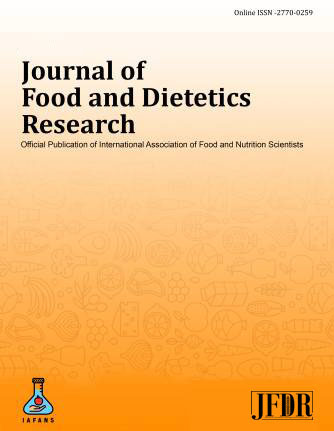Evaluation of Selected Street Fried Foods Oil Quality
DOI:
https://doi.org/10.48165/jfdr.2022.2.1.1Keywords:
Deep frying, Fatty acids, Lipid oxidation, Oil quality, Street fried foodsAbstract
Objective: Deep frying is a process in which interaction of food particle and oil takes place at high temperatures. Deep fried foods are commonly consumed foods for its desirable taste, texture and mouthfeel. However, oils used for deep frying can undergo certain oxidation reactions. This study aimed to analysis the selected street fried foods.
Methods: In this study, deep fried snacks such as poori (flattened bread of wheat), samosa (pastry with savoury filling), bread pakora (bread stuffed with potato and coated with gram flour) and chicken pakora (small pieces of chicken with mixture of different spices) were randomly collected from the street vendors of Delhi which are consumed regularly by local population. The fried oils from these snacks was extracted and analysed for lipid oxidation status.
Results: The study revealed that all these extracted oils have high levels of free fatty acids (FFA), peroxide value (PV), and p- anisidine value (p-AV). Although total polar materials (TPM) was not checked in frying oils but the extracted oils was reheated to 50°C and checked for TPM levels, wherein more than 65% of oils were found of unacceptable quality (25.0 > TPM). The fatty acid profiling of oils using gas chromatography depicted the breaking of double bonds into single bonds as Saturated Fatty Acids (SFA) constituted 69.2-73.7% in these extracted oils. Trans Fat (TFA) also constituted 1.57-2.31% of these oils. The FTIR data of the oils corroborated the fact that degree of saturation is more in these extracted oils than in fresh oils.
Conclusions: All the street fried foods, analyzed, had less than the desirable quality. Therefore, we suggest educating the street fried food vendors to provide good quality fried foods for public.




